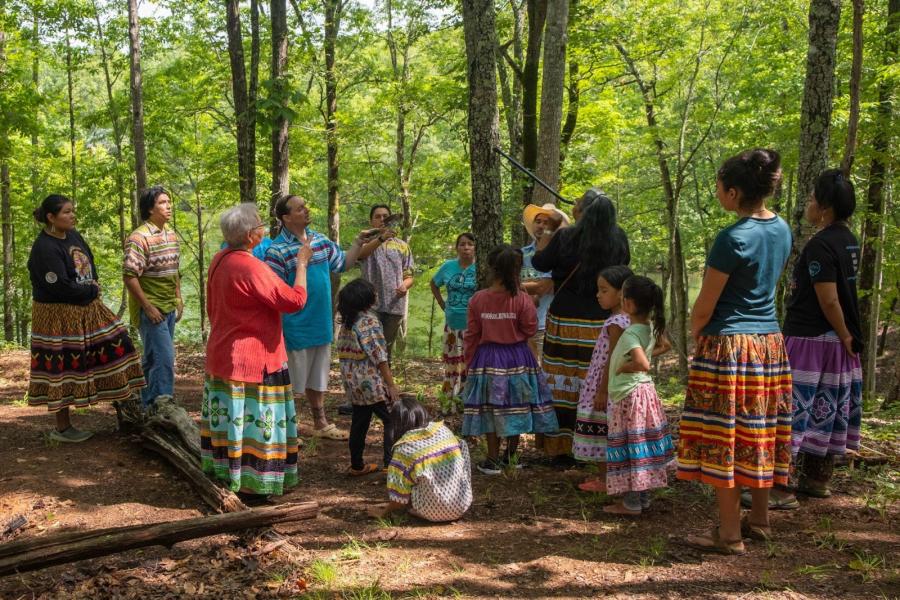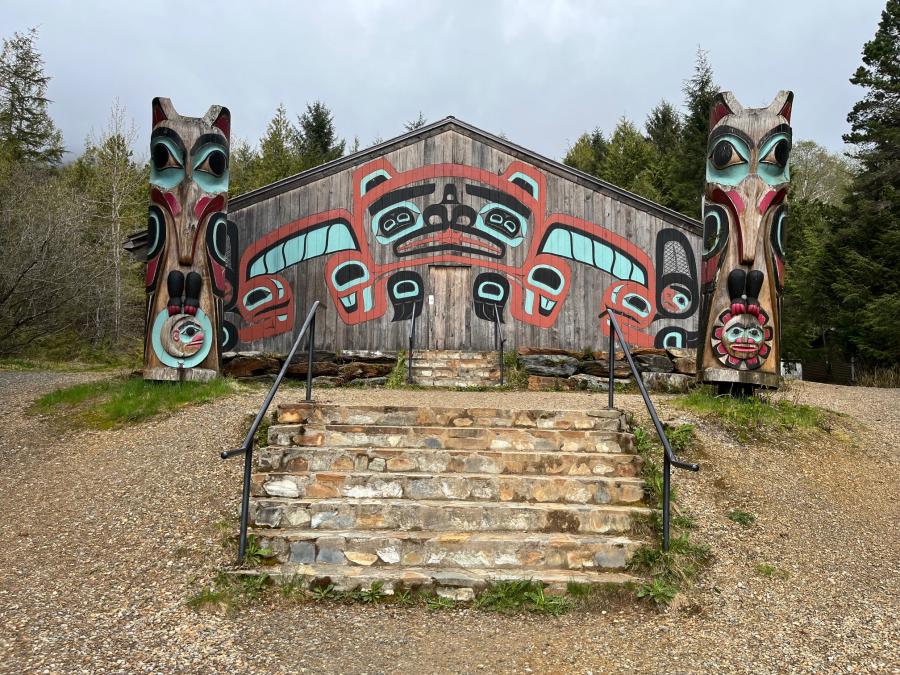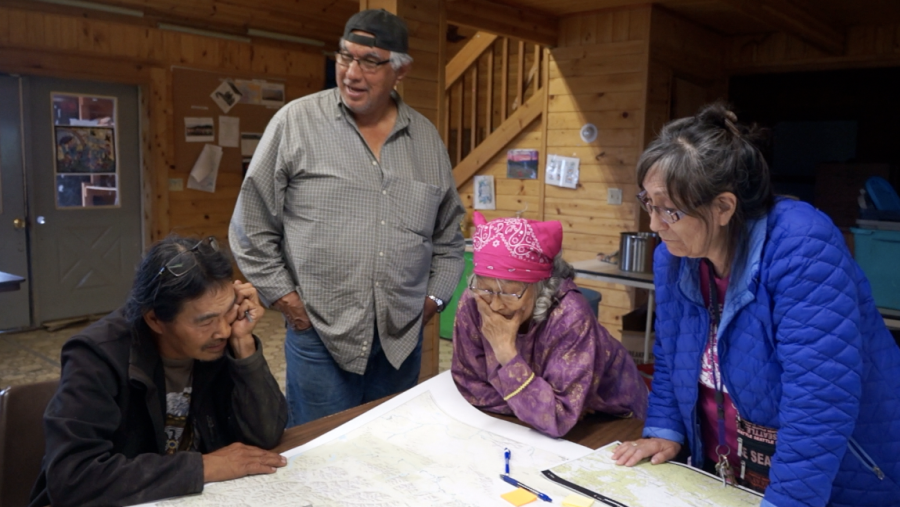
Image courtesy of mn.gov.
By Laura Harvey (CS Intern)
After President Biden’s canceling of the Keystone XL pipeline, and Michigan Governor Gretchen Whitmer’s shut down of Line 5 earlier in 2021, Line 3 remains one of the largest pipeline controversies in North America today. Water Protectors had hoped that Biden would continue with his environmental agenda by canceling Line 3 like he did the Keystone XL pipeline. However, on June 23, 2021, Biden’s administration publicly defended the pipeline in court.
Line 3 is a proposed replacement pipeline for Enbridge’s current Line 3, which connects the tar sands of Alberta to the shores of Lake Superior. The current pipeline, built in the 1960s, has leaked at least 15 times, and its parent company Enbridge argues that this replacement will allow them to abandon the old line to avoid further environmental damage. However, the new line takes an entirely different route, through previously untouched wild rice wetlands, and Anishinaabe 1855 treaty territory, primarily in Minnesota. Despite the line now being at least 60 percent complete, Anishinaabe Water Protectors continue to fight Line 3 on a multitude of fronts.
The pipeline was first approved in November 2020 and has met fierce resistance from Anishinaabe communities including the Red Lake Nation, White Earth Band of Ojibwe, and Mille Lacs Band of Ojibwe. Water Protectors oppose the new line for many reasons. Firstly, the construction of the new pipeline allows Enbridge to abandon the old pipeline, leaving it to corrode and further pollute waterways. Secondly, the new pipeline has a higher capacity, able to transport 915,000 barrels of tar sands crude per day, so it has worse climatic effects. Thirdly, all pipelines leak at least a very small amount, and this new route would allow that pollution to occur in the very sensitive ecosystems that grow wild rice, and far upstream in the Mississippi river, polluting drinking water throughout Turtle Island (North America.) There are multiple Water Protector camps that formed over this past winter along the proposed route, with cases challenging Line 3’s permits simultaneously being fought in the courts.
The most recent court case was brought by the Red Lake Band of Chippewa Indians, the White Earth Band of Ojibwe, and three environmental groups against the U.S. Army Corps of Engineers. They argued that the Army Corps of Engineers had not fulfilled their legal duty to consider climatic effects of the pipeline and compliance with the Clean Water Act, when granting Enbridge their permit for Line 3. The court filing submitted by the Department of Justice on June 23 is the first indication from the Biden Administration of their stance on Line 3. They defended Enbridge and the U.S. Army Corps of Engineers, claiming that they had fulfilled their duty to consider environmental effects of the pipeline, and urged other courts to rule against Anishinaabe and environmental Water Protectors. This stance is not only a betrayal of the climate promises on which President Biden campaigned in 2020, but also reveals the administration’s lack of will to stand with Indigenous communities against large corporations. Moneen Nasmith, the lead lawyer on the case from Earthjustice, told the New York Times that “We are extremely disappointed that the Biden Administration continues the Trump Administration’s policy of ignoring tribal rights, environmental justice, and climate concerns in favor of fossil fuel industry profits. If the president is genuine in his pledge to take climate justice and tribal rights seriously, his administration must stop defending the Trump Administration’s decision.” A similar case is being fought in the Minnesota State Court against the U.S. Army Corps of Engineers.
Earlier in June, Water Protectors suffered another considerable defeat when the Minnesota Court of Appeals rejected one of the most prominent cases against Line 3. The plaintiffs, multiple Anishinaabe groups, campaign groups, and the Minnesota Department of Commerce, claimed that the Minnesota Public Utilities Commission (MPUC) did not consider sufficient information on the need for the new pipeline before approving the project. The Court ruled that although it is hard to judge the future market for the expanded Line 3, the MPUC was right to issue the permit. Judge Jesson also wrote in the decision that “there was no option that didn’t impact the rights of Native Americans”. The decision judged that a new pipeline was needed to avoid further pollution of the old pipeline, which outweighed new pollution risks, climate damage, and violations of Tribal sovereignty.
Other legal actions against the pipeline remain in courts, and new ones are being prepared. However, Frank Bibeau, an attorney representing the White Earth Nation, noted that legal changes were unlikely to help going forward: “By the time we get this through, it would take nine months to a year… I don’t think that road’s any good for us, to tell you the truth. Right now, I don’t think it’s going to help us to make that our primary strategy.”
Other strategies include divestment from Enbridge’s major bank funders through Stop the Money Pipeline. On May 7, 2021, Stop the Money Pipeline’s Global Day of Action saw protesters across four continents targeting branches of Citibank, Wells Fargo, Bank of America, and other investors in Enbridge to encourage them to divest. There were fake oil spill demonstrations in New York and D.C. as well as murals in San Francisco and a floating banner display in Chicago.
Away from the courts and on the front lines, at least 4,000 workers descended on the construction sites on June 1, 2021. As construction workers have flooded in, local issues have arisen. As many protestors predicted, there has been increased violence against Indigenous women. In February, two pipeline workers from one of Enbridge's subcontractors were convicted of sex trafficking. Both were out-of-state workers, with one charged for solicitation of a minor, and the other for solicitation to engage in prostitution. Enbridge says that both workers were immediately fired. Ojibwe-Cherokee city councilor Sheila Lamb also said that a local NGO Violence Intervention Project has requested reimbursement due to their increased demand for services to survivors who have been assaulted by Line 3 workers. The police harassment and sexual violence from workers is exacerbated by the fact that the majority of the Water Protectors are women, as women have a sacred relationship with water in Anishinaabe culture.
Those who have spoken out against the huge number of Missing and Murdered Indigenous Women in North America have often laid the blame at the feet of fossil fuel companies who bring large numbers of transient workers to rural communities. Concurrently, despite Enbridge promising that 50 percent of jobs would go to local Minnesotans, contributing $2 billion to the economy, only 33 percent of jobs actually went to local workers. The large number of transient workers not only has let down promises to boost local economies but also endangers Indigenous women.
Intimidation of protestors by local police has also become a prominent issue for Indigenous communities. In their agreement with the Minnesota State Government, Enbridge agreed to pay any extra policing costs caused by the construction of the pipeline. Against the backdrop of Standing Rock protests, authorities wanted to ensure that the policing of any unrest caused by the pipeline was not to be paid for by local taxpayers. The Public Safety Escrow Fund Account was created so that Enbridge could deposit funds, and the Northern Lights Taskforce, an alliance of local police formed to deal with Line 3, could claim reimbursement for any work related to Line 3. However, with $1,250,000 now deposited by Enbridge, and $877,710 already dispersed to local police units, there is growing concern that the funding is incentivizing police harass protestors. Water Protector Dawn Goodwin (Ojibwe) commented that “It’s a constant, daily battering from law enforcement… It brings back memories of what happened with the Dakota Access pipeline. It makes us wonder, what’s next?” This harassment is not limited to Indigenous Water Protectors. Local journalist Lynna Minzer was followed home by a sheriff's car and was removed as a reporter for Line 3 due to concerns for her safety.
In rural areas, there is very little government funding to keep sheriff’s offices open, and this new role with what seems to be a bottomless pot of funding has given police a new purpose to monitor, follow and randomly search protestors. Cass County Sheriff Tom Burch claims that “we certainly aren’t harassing anyone. The biggest issue is that local taxpayers shouldn’t have to assume the financial burden. I don’t care what company it is — if they’re creating extra work for us, I expect them to pay,” but given this unusual arrangement, there is not a precedent to follow to ensure law enforcement does not harass Anishinaabe Water Protectors. A number of activists and lawyers, including Mara Verheyden-Hilli from the Partnership for Civil Justice Fund, Tara Houska (Couchiching First Nation), and Winona LaDuke (Anishinaabe), are currently developing a case against Enbridge's supposed privatization of Minnesota police forces.
Direct action on the ground in Minnesota is gathering momentum as temperatures continue to rise. During the first week of June, the Treaty People Gathering protest enacted the largest direct action against Line 3 to date. With over 2000 protestors, the gathering shut down two of Enbridge's pump stations near Itasca State Park, where 247 people were arrested. Water Protectors also launched a treaty encampment near where the pipeline is intended to cross the Mississippi River. Although the gathering was only intended to last until June 8th, many new protesters have opted to stay at the encampments throughout the summer.
Awareness campaigns are also in full force to attempt to gain the attention of national pressure to stop the pipeline. Released on Earth Day in April, the song “No More Pipeline Blues” is a swelling ballad that illuminates the sacred relationship that Indigenous people hold with the land and water. It was written and produced by Larry Long, and sung by a collective of Indigenous musicians including Raitt, the Indigo Girls, LaDuke, poet laureate Joy Harjo, Waubanewquay, Day Sisters, Mumu Fresh, Pura Fe, Soni Moreno, and Jennifer Kreisberg. The accompanying video shows scenes of prayer, dance, and protest against the pipeline.
Given Biden’s firm action in stopping Keystone XL, many protestors felt that pleas to the new President may be their best chance to protect Anishinaabe territory and wild rice habitats. On February 15, 2021, Cultural Survival sent an open letter to the Biden-Harris Administration with 15 calls to action that honor Indigenous rights including stopping Line 3. Likewise, over 300 Indigenous, environmental, and faith-based organizations signed a letter sent to President Biden on May 26, 2021, urging him to cancel the pipeline. These organizations included Giniw Collective, Honor the Earth, Indigenous Environmental Network, Sierra Club, Sunrise Movement, Fridays for Future USA, Hip Hop Caucus, Physicians for Social Responsibility, Jewish Climate Action Network, CatholicNetwork US, and others. More recently, six environmental groups invited Department of the Interior Secretary Deb Haaland on June 17, 2021, to visit Minnesota and meet with local leaders, claiming that “So far, President Biden and the Army Corps of Engineers haven’t listened to our voices — we are hoping they will listen to yours.”
Tribal attorney Tara Houska has revealed that some Water Protectors have a direct line of contact with the Biden administration and are currently holding talks behind closed doors. She said that they have had meetings with representatives of the Council of Environmental Equality, the Army Corps of Engineers, the Department of the Interior, and the Department of Justice transition team. However, she said that a major stumbling block of these talks is that Federal representatives do not have a sufficient understanding of Tribal sovereignty. This misalignment has been clearly illuminated by the Biden Administration’s recent defense of Line 3.
With the pipeline over half complete, and a well-funded police presence on the ground in Minnesota, time appears to be running out for the Anishinaabe Water Protectors. However, with increasing support from growing numbers of protestors and celebrity advocates like Jane Fonda, the new Presidential Administration still has the opportunity to revoke key permits granted during the Trump era, and turn the tides on Enbridge’s largest pipeline to date.
Take Action:
Sign a petition to Biden: lakota.law/3yF00Lk



